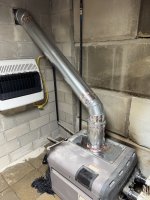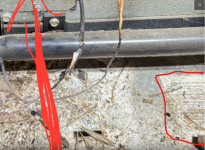Our heater exchanger was recently replaced after a small leak had started. I usually do the work myself but the pool equipment was being moved so I just had the local pool guy do it. The heater has worked well for a few weeks except for a smell like , in retrospect , would have been burning soot -- but bottom line an odor that permeated the air all around the outside of our house.
Yesterday evening I raised the heater a few degrees in antcipation of the weekend - fortunately I was working outside when I saw the smoke. This is what I found.
Thoughts? I have not looked at the electronics yet - but assuming still functioning should I take the heater apart and look for some sort of soot build up? How is the best way to take apart - do I need to take the heat exchanger back out ??
Yesterday evening I raised the heater a few degrees in antcipation of the weekend - fortunately I was working outside when I saw the smoke. This is what I found.
Thoughts? I have not looked at the electronics yet - but assuming still functioning should I take the heater apart and look for some sort of soot build up? How is the best way to take apart - do I need to take the heat exchanger back out ??








